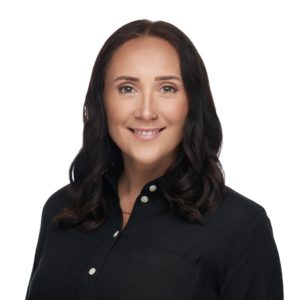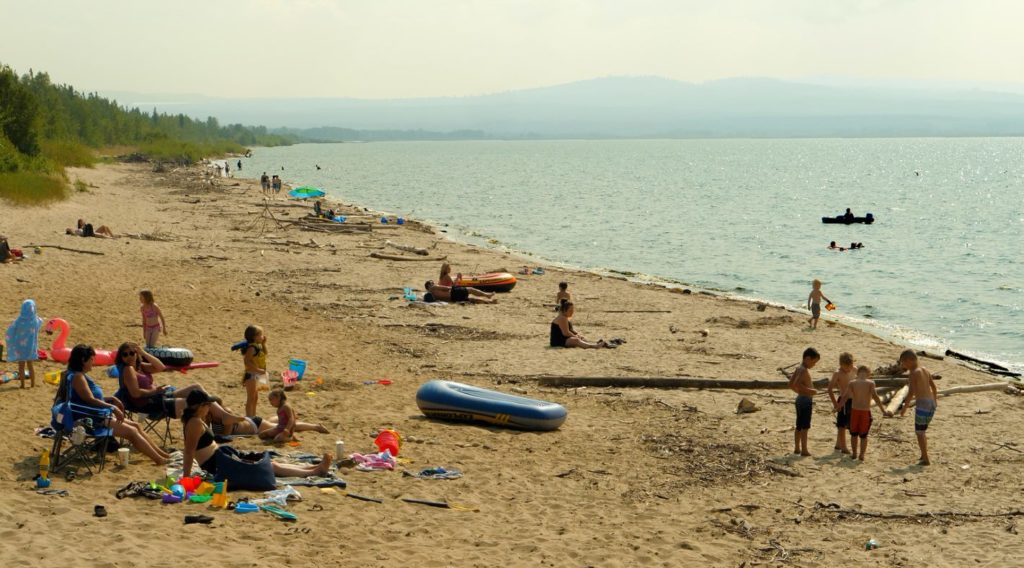Two rural communities are proving, like a phoenix, they can rise above crises and make positive changes to health care.
Both Slave Lake and Fort McMurray faced devastating losses when wildfires burned significant portions of their communities in 2011 and 2016, respectively.
Combined property losses tallied in the billions of dollars, but the health impacts on local residents weren’t as easily measurable.
Amanda Holloway didn’t live in Fort McMurray at the time, but she knew it would take a huge toll on residents.
“I was absolutely taken to my knees and [felt] heartbreak for my friends who…lived there—all of those individuals who lost their home,” she said.
“It struck me so much that I needed to come back [to Fort McMurray]. I needed to work, and I needed to contribute to my community. It was actually the fire that made me move back.”
By August 2016, she had packed up her family in Newfoundland and returned to the northern Alberta community where she once worked as a registered social worker.
She started helping with the crisis team at the Northern Lights Regional Health Centre.
“It’s been a very challenging time for the Wood Buffalo region,” said Holloway, citing the fire and flood that impacted the community in recent years.
“Whether it’s with finances, advocacy, mental health, addiction, all of the things that are existing, psychosocial recovery is not a sprint, it’s a marathon,” added Holloway, who now leads the Canadian Mental Health Association-Wood Buffalo Branch as executive director.
When the COVID-19 pandemic started two years ago, Holloway said her community had valuable tools already in place that were developed in the wake of the wildfire and other challenges.
All the difficult lessons learned over the past few years helped create a better understanding of mental health needs during crisis situations. This understanding allowed for better mental health support planning during the pandemic, she explained.
“Whether we wanted to or not, we certainly have become experts in the disaster space. It’s been interesting to watch other parts of the province, the country, or [the] globe talk about the impact of this pandemic [and] what recovery is going to look like.
“It’s almost like we already had a crystal ball as to how [the pandemic] is impacting individual’s mental health and what the long-term implications are going to be. It’s given us a unique opportunity to be more proactive around our programs and our service delivery…”
Holloway has also talked about her beloved community with others.
“I’ve had the incredible honour to share my experiences from the disaster lens with peers across the province. Of course, our goal is positive mental wellness for individuals in our region, but we want that for every single region, across the province, [and] across the country,” she said.

— Photo supplied by Amanda Holloway
“We have shown that we can be incredibly responsive to community needs. We have lots of agility and capacity to move around quickly…. We are being incredibly community focused in providing services that are most needed in those times.”
Big changes to health care also arose from the ashes after a wildfire in Slave Lake, located about three hours north of Edmonton, more than a decade ago.
Seven physicians moved out of the region after the wildfire, leaving only four to manage a population of about 10,000 people in the town and surrounding area, said Slave Lake’s current mayor, Tyler Warman.
“After the fire, we created a [group] called the Tri Council. It’s the town, the [Municipal District of Lesser Slave River,] and the Sawridge First Nation,” said Warman, who was a new town councillor at the time of the fire.
“We do a bunch of governance [work] together. We have a subcommittee that looks after some health priorities born from issues that developed after the fire, largely in regards to physician recruitment and retention.”
After years of having Alberta Health Services recruiters come and showcase the Slave Lake area to prospective physicians, the Tri-Council’s health committee decided it was time the region took an active part in those tours.
“We built these customized tours to basically show [physicians] what existed beyond the job,” explained Warman, who has served as mayor for the past nine years.
“They already knew what the job was, and the job was similar in different locations. They were already interested in the job [and it was a] question of ‘where do you want to put roots? Where do you want to build quality of life? Can we offer other things? Do you know, [we have] a wilderness, a beach, and a lake?’ … I think that [aspect of promoting the community] went a long way.”
Today, Slave Lake has 10 physicians and plans to add to its seven nurse practitioners. Shortly after the fire in January 2012, the province opened the Slave Lake Family Care Clinic, the first rural initiative in which all staff, including physicians, work as employees rather than contractors. Only two other Family Care Clinics operate in the province—one each in Edmonton and Calgary.
Warman said the concept of these clinics, where a team of health professionals provide non-emergency medical care in a stand-alone clinic, has been a game-changer for the area. The Slave Lake Clinic has led to a spirit of collaboration for local health care.
“I actually think that we have some of the best access to health care in the province,” he said, noting the clinic is open evening and weekends.

“We had some staffing issues over the last year or so due to COVID and people being out and sick, so we’ve had to adjust our hours there, but, for a number of years, [we’ve been] able to go there on Sunday at nine o’clock and get an appointment. That’s huge. I think family care clinics are the best thing from a patient standpoint, for sure.”
Warman encourages communities facing health-care hurdles to get involved and serve as local ambassadors.
“If you really want to move health care forward, you have to be part of the process….”
– Tyler Warman, Mayor of Slave Lake
“If you have [health professionals] that are interested in your community and are coming to see your community, you need to be invested in promoting your community.
“How [is your community] going to stand out? That really comes down to locals needing to [be part of the tour].”
Another consideration is how to sell the community to the family members of potential health providers who play a huge role in any decision to move on the part of these providers, noted Warman.
The area is even considering using a similar approach to encourage people outside the health-care realm to move to Slave Lake.
Back in Wood Buffalo, Holloway said the region attracts a proud and hardy bunch who will persevere through the tough times.
“This is a community that recognizes the skill set and assets of everybody who shows up in these spaces to provide support. Our networks include individuals from all different designations from industry and from any place,” she explained.
“If you’ve ever experienced Fort McMurray, you know that the people who live here and work here do it because they love this community, and they want to impact positive change for everybody who calls it home.”
— Lorena Franchuk
